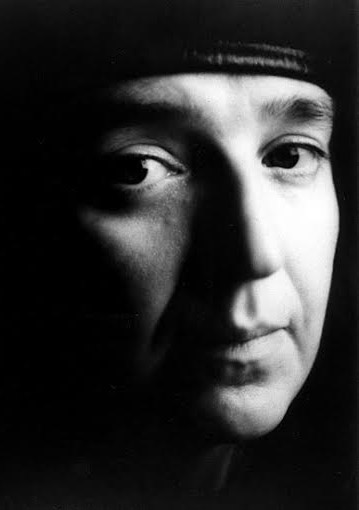
A 1992 portrait of activist and artist Sue Coe photographed by Steve Heller. Coe is set to give a lecture on Oct. 9 at the Wexner Center for the Arts.
Credit: Courtesy of Galerie St. Etienne, New York
Since she could think, Sue Coe said she knew she wanted to be an artist and draw animals. Growing up next to a factory farm and slaughterhouse in England gave her that chance.
Coe, a political artist and activist, creates work that she considers a form of “visual journalism.” Her bold prints and illustrations often center on animal activism and the atrocities that take place in slaughterhouses, she said, but she has also made several moral arguments through art on topics such as war, AIDS and apartheid.
Coe is set to give a speech, “Some Animals are More Equal Than Others,” Thursday at 4 p.m. at the Wexner Center for the Arts, which is sponsoring the event with OSU’s Humanities Institute and the Department of Arts Administration, Education and Policy.
The results of her unusual exposure to meat industry practices continue to be seen today in her art, which she started making around age 10. She’s been featured in The New York Times and The New Yorker, among other publications.
People might be able to read powerful stories about slaughterhouses and what occurs within them, but images can show people things that they might or might not be ready to see or think about, said Amy Youngs, an associate professor of art at OSU.
“It’s a mode of exposing the cruelty to animals without the horror of film or photography,” Coe said. “Which most people can’t look at because it’s so horrifying.”
One of Coe’s works, “Modern Man Being Followed by the Ghosts of His Meat,” depicts a man holding a McDonald’s bag as various farm animals walk behind him. Another print, “Cruel,” illustrates a man gathering the blood of a slaughtered animal into his bag of money.
“Visual language can make humans respond viscerally to images in ways that writing cannot,” said Deborah Smith-Shank, chair of OSU’s Department of Arts Administration, Education and Policy and a visual artist. “Writing can maybe do it as a redundancy but I don’t think it’s our primary method of meeting the world head on.”
There are many ethical questions surrounding the contemporary meat industry, including concerns of sustainability, animal welfare, the intrinsic value of sentient beings and the increasing global demand for meat products, said Donald Hubin, principal investigator for OSU’s Center for Ethics and Human Values and former chair of the Philosophy Department.
“Coe’s work is an incredible way to see one of the most prevalent relationships that people have with non-human animals,” Youngs said, “that we eat them.”
A further issue currently surrounding the meat industry is proposed legislation in several states known as “ag-gag” laws, which prohibit undercover filming of the practices of slaughterhouses and prevent photographers and filmmakers from entering the facilities. These laws have been passed in a number of states — not Ohio, though — under the rationale that they protect corporations’ rights of private property and privacy.
“The citizen journalists and activists who are doing this covert filming are doing a public service, but they’re being shut down by these bills, which will make it more difficult for people to know what’s going on,” Hubin said.
Slaughterhouses tend to be more accommodating with Coe, since she uses art, not a camera, and therefore those employed at the slaughterhouse can review her work and ask her to make edits if they believe something is too graphic.
Ultimately, she wants to relay everyday events, not cause controversy.
“I’m not telling people how to think. I’m not telling them to agree with me,” Coe said. “I’m just attempting to give them the information so they can make up their own mind.”
Drawing on the ideas of Canadian philosopher Marshall McLuhan, Hubin noted that humans often grow numb to the things that routinely happen around us, even if atrocities are taking place.
“That which we are immersed in, that which surrounds us all the time, is hardest for us to see,” Hubin said. “It’s invisible because it’s everywhere, like the atmosphere.”
For instance, Hubin said, many are appalled by the fact that some dogs in China are used as food. Even if those dogs were raised in the most humane, compassionate environment before their slaughtering, people would still be dismayed because Americans see dogs as pets.
The interesting reality is that pigs are considered slightly smarter than dogs, Hubin said, but because eating bacon and pork has been a long-time societal norm, Americans hold pigs at a lower standard of value — one that permits their fateful, daily circulation through the production line.
“Someone once said you have to hear the truth 10 times before you actually change,” Coe said. “But my art is ultimately a way for people to reconsider their diet.”
Coe said her favorite part of sharing her art is seeing it directly change people’s lifestyles.
“Many people have gone vegan after seeing my work,” Coe said. “They see the art, they feel they can change and they stop eating animals.”
Coe’s lecture is to be held in the Film and Video Theater and is free for all audiences.


